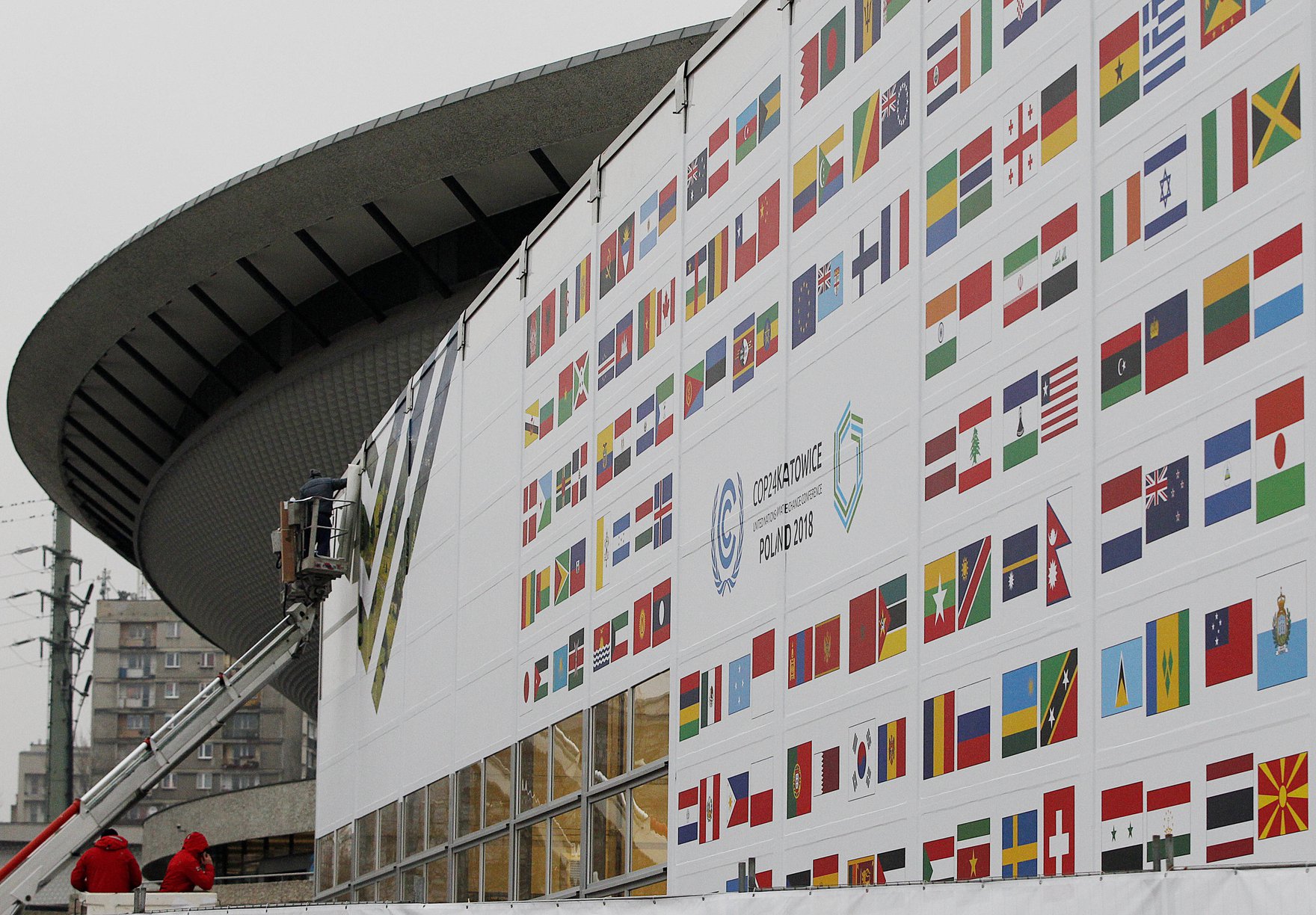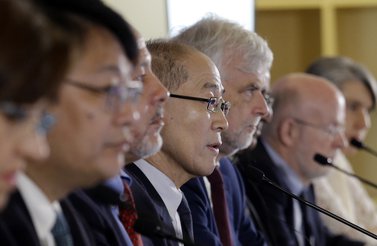The twenty-fourth meeting of the Conference of the Parties (COP24) to the United Nations Framework Convention on Climate Change (UNFCCC) — happening December 2–14 in Katowice, Poland — will present a new test for multilateral climate diplomacy.
The meeting comes three years after the landmark adoption of the Paris Agreement, and the parties to the agreement face a related challenge at COP24. The Paris Agreement Work Programme (PAWP), a negotiation round launched in 2015 to seek further agreement on and development of some key aspects of the Paris Agreement, must be completed.
The Completion of the Paris Agreement Work Programme
The milestone is a significant one. When signing onto the Paris Agreement, parties agreed on a set of general commitments — such as preparing, maintaining and periodically updating a nationally determined contribution (NDC), or reporting information on their domestic action. Parties also agreed on the overall structure of different mechanisms, including market mechanisms, a transparency mechanism and a mechanism to promote compliance.
The objective of the PAWP is to elaborate a package of modalities and procedures that will specify how these commitments will be fulfilled and how the different mechanisms created by the Paris Agreement will function.
Since 2016, this package has been negotiated in different subsidiary bodies, under the authority of the Conference of the Parties of the UNFCCC. At COP22, parties decided that these bodies needed to conclude their work during COP24 and forward their outcome to the governing body of the Paris Agreement — the CMA (the Conference of the Parties serving as the meeting of the Parties to the Paris Agreement) — for adoption.
In Katowice, the CMA is expected to formally adopt the implementing decisions of the Paris Agreement. Thereafter, all the decisions relating to the implementation of the Paris Agreement would be negotiated only under the CMA.
COP24 marks an important shift; the Paris Agreement now represents the new centre of gravity in climate governance, and accordingly, the CMA is poised to become the main focal point of the climate discussions in the future.
Technical Discussions on Specific Elements of the Paris Agreement
The PAWP covers nearly 20 different items, which all relate to specific provisions and mechanisms of the Paris Agreement. As such, the discussions to be held in Katowice to finalize the PAWP will be very technical and targeted.
For instance, the parties will have to find agreement on the features of NDCs. Article 4 of the Paris Agreement makes it clear that parties must communicate an NDC, that is, a national climate plan indicating — among other things — the mitigation pledges they intend to achieve.
Parties still need to determine fundamental requirements about NDCs: should they have a common time frame? Should they have single or multi-year targets? Should they reflect a low-carbon long-term development strategy, or instead align with domestic development and poverty eradication strategies? Other elements will be under discussion as well, including the type of information that parties should provide in their NDCs to enhance their clarity and transparency. In Katowice, all these points could be problematic.
Operationalizing the mechanisms in article 6, too, requires consensus. Article 6.2, which enables parties to provide internationally transferred mitigation outcomes — that is, to engage in carbon trading — could be particularly difficult. The means of ensuring oversight, preserving environmental integrity and avoiding double counting in carbon markets is a divisive subject among parties.
Discussion on the transparency framework of article 13 will also be central at COP24. NDCs are not legally binding, so public pressure — enhanced through transparency — is essential to encouraging parties to achieve their NDCs. A key challenge in the negotiations surrounding article 13 will be to define a framework that allows for flexibility, as provided by the Paris Agreement, without creating completely different requirements for developed and developing countries.
Finally, article 9.5 and 9.7’s climate finance requirements and biennial reporting requirements remain contentious. In particular, implementing article 9.5, which requires developed parties to communicate projected levels of finance every two years, represents a challenge as developed countries have annual national budgeting processes. Climate finance at COP24 is likely to be a sensitive issue; developing or emerging economies could use the conclusions of the recent Intergovernmental Panel on Climate Change report to draw attention to the need for financial resources to cope with the adverse effects of climate change. As this report indicates that limiting global warming to 1.5°C is now practically out of reach, heightened emphasis will be placed on the issues of adaptation, loss and damage, as well as on climate engineering techniques.
Given all the technical details that remain, and considering that the different texts that will serve as the basis of negotiation in Katowice represent a total of 307 pages, parties are facing a considerable amount of work. As recently pointed out in a note prepared by the diplomats chairing the negotiations of the PAWP, “there are still far too many options on the table and quite a few texts are not in good enough shape to help Parties make their final choices in the negotiations in an efficient and transparent manner.”
A Test for Multilateral Climate Diplomacy
Finalizing the PAWP has increasingly become a political challenge. It will require parties to delineate more precisely the meaning of the provisions of the Paris Agreement without renegotiating the content of this treaty. As details now need to be worked out, there is less room — compared to when the Paris Agreement was drafted — for vague and ambiguous language. At the end of COP24, it is crucial that all parties feel as if the decisions respect the letter and the spirit of the Paris Agreement, because the PAWP package can only be adopted by consensus.
Parties already showed their ability to reach consensus on critical issues at COP21. However, the geopolitical landscape has gone through profound changes since then. With the rise of populist movements and the election of leaders unwilling to act on climate change — as in the United States, Brazil and Australia, among others — the ability of the United Nations’ climate process to initiate domestic action seems to be in jeopardy.
The fact that Poland — a country with a major coal industry that regularly challenges the level of ambition of the European Union’s climate policy — holds this year’s COP presidency is a source of concern to many. In the final hours of COP24, when the most delicate political compromise will have to be struck, some fear that the requisite pressure to foster consensus will not be forthcoming.
As such, a key question for this COP is whether or not parties will be able, once again, to set aside their differences and reach an agreement on these complex issues in a distinctly more divisive political climate.
COP24 will be a highly technical, important negotiation, and it will put multilateral climate diplomacy to the test. The adoption of the PAWP provides a rare opportunity for negotiators to buttress the principles formulated in Paris with a comprehensive framework to foster robust climate action. If the wrong balance is struck, both domestic and international efforts to address climate change will be stifled.




